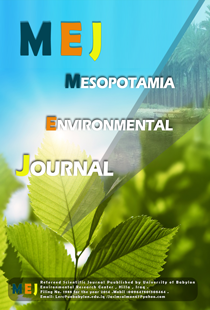Susceptibility testing of Capparis spinose against bacterial species isolated from environmental and clinical sources in Erbil city
Keywords:
C. spinose, HAIs, Gram negative bacteria, E. coli, S aureusAbstract
The current study aimed to susceptibility testing of Capparis spinose against bacterial species isolated from environmental and clinical sources. 260 samples were taken from indoor places (hospital and school). The environmental samples included air-condition system and air rooms of hospital (Rizgary Hospital and Erbil Teaching Hospital) and school buildings (Gwar-jara School, Shorsh School and Shaysta School) in Erbil city from January to April 2023. Out of 260 samples, 157 isolates (or 60.4%) showed good results for bacterial growth on the best cultured media, including blood agar, mannitol agar, and MacConkey agar. 103(39.6%) of 260 samples were appear as negative results for bacterial growth. Staphylococcus aureus was the most isolated, with 42(26.8%) isolates out of a total of 157 isolates, followed by E. coli as the number of its isolates reached 40(25.4%). While, Enterobacter cloacae the least isolated, as the number of its isolates reached 11(7.0%) out of a total of 157 isolates. The most sensitive was E. faecalis towards the C. spinosa aqueous extract, as the inhibition zone reached 24.2 mm, while S. aureus was resistant to the plant extract, as the inhibition zone reached 7.7 mm. while, the results shows the zone of inhibition of the ethanolic extract against the study bacteria, where the results show that E. faecalis was the most sensitive towards the ethanolic extract, as the inhibition zone reached 41.2 mm, while S. aureus was the least sensitive towards the ethanolic extract, as the inhibition zone reached 19.8 mm.
Downloads
Published
How to Cite
Issue
Section
License
Copyright (c) 2023 Mesopotamia Environmental Journal (mesop. environ. j) ISSN: 2410-2598

This work is licensed under a Creative Commons Attribution-NonCommercial 4.0 International License.



